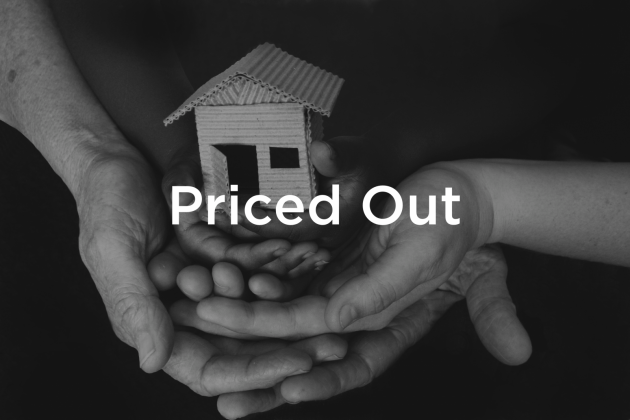Last Updated on February 26, 2021
Unlocking Homelessness, Part 1: Who Experiences Homelessness and Why
A Study by the National League of Cities
Prior to the COVID-19 pandemic, homelessness was frequently cited as a top concern for cities of all sizes. Now in the midst of the COVID-19 pandemic and the pandemic-induced economic crisis, along with a racial reckoning, homelessness has been exacerbated. In response, municipalities across the country have unveiled COVID-19 emergency response plans to address homelessness, increased and introduced new shelter operations, strengthened relationships with the private and non-profit sectors, and expanded regional approaches to homelessness.
From this report, local elected officials and city staff will learn the various contributing factors of homelessness, along with the distinct challenges and pathways of homelessness for specific subpopulations, including Single Adults, Families with Children, Youth and Young Adults, Veterans, Victims of Domestic Violence, Persons with Incarceration Histories and Chronically Homeless Individuals.
Read the article here.
From the National League of Cities:
Understanding encampments for more compassionate and effective solutions
Without sufficient resources to shelter and house the growing population of unhoused people, the number of encampments has grown in cities nationwide. Community responses to encampments varies and is dependent upon competing priorities of a diverse group of stakeholders, including encampment residents, business owners, public health and safety officials, community residents and advocates. Understanding both the reasons why individuals experiencing homelessness live in encampments and how servicing encampments can advance a city’s homelessness response is central to developing a more compassionate and effective local government approach to encampments.
The original “brief” is designed for 11″ x 17″ paper (two normal pages each). I have created an easier-to-read version here: https://friendsoftheunsheltered.org/wp-content/uploads/National-League-of-Cities-Overview-of-Homeless-Encampments-Brief.pdf. The original can be found at https://www.nlc.org/resource/an-overview-of-homeless-encampments/.

The Price of Housing
Last Updated on February 13, 2021
Homelessness Rises Faster Where Rent Exceeds a Third of Income
- Communities where people spend more than 32 percent of their income on rent can expect a more rapid increase in homelessness.
- Income growth has not kept pace with rents, leading to an affordability crunch with cascading effects that, for people on the bottom economic rung, increases the risk of homelessness.
- The areas that are most vulnerable to rising rents, unaffordability and poverty hold 15 percent of the U.S. population – and 47 percent of people experiencing homelessness.
Communities where people spend more than 32 percent of their income on rent can expect a more rapid increase in homelessness, according to new Zillow-sponsored research on the size and root causes of the nation’s homelessness challenge. The research also estimates that the scale of homelessness nationwide has been undercounted by roughly 115,000 people, or 20 percent.
Read the article here. Read the research paper submitted to the Annals of Applied Statistics here.
NPR: More older Americans become homeless as inflation rises and housing costs spike
COLUMBIA FALLS, Mont. — On a recent rainy afternoon in this small town just outside Glacier National Park, Lisa Beaty and Kim Hilton were preparing to sell most of their belongings before moving out of their three-bedroom, two-bathroom rental home….
Read the article here.
High rents are to blame for the severity of the state’s homelessness crisis. Economists John Quigley and Steven Raphael were among the first to demonstrate that housing affordability—rather than personal circumstances—is the key to predicting the relative severity of homelessness across the United States.1 They estimated that a 10.0 percent increase in rent leads to a 13.6 percent increase in the rate of homelessness. Consistent with Quigley and Raphael’s findings, our analysis indicates that median rents across U.S. states explains 43 percent of the variance in rates of homelessness in 2017.
Over the 2010-2016 time period, Oregon created only 63 new housing units for every 100 households that formed during the time period, increasing competition for housing.
Read the entire report 2019-03 OregonHomelessness.
There is ample empirical evidence finding that regulatory restrictions tend to increase the price of housing and, in turn, to make communities less affordable for low- and moderate-income households. Since the mid-1970s, several studies published in scholarly journals have assessed whether local land-use regulations affect housing supply and prices. The general finding in this line of research is that indeed, land-use constraints are associated with higher housing prices.
A recent nationwide assessment of the effects of housing regulation on housing costs is provided in a study by Edward Glaeser and Joseph Gyourko (2003)…. They find quite large regulatory taxes embodied in the price of housing. They also find that in most areas, land costs explain only one-tenth of the difference between housing prices and construction costs, and the remaining nine-tenths by the price effects of land-use regulation.
This is an academic book. For library and purchasing options see https://www.worldcat.org/title/how-to-house-the-homeless/oclc/758847110&referer=brief_results



